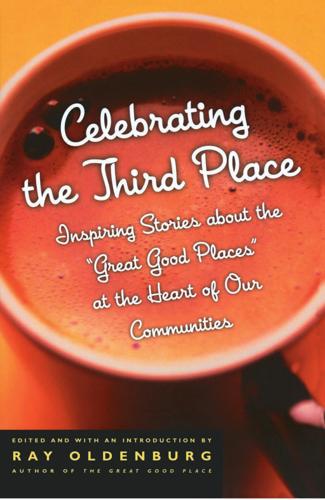
Celebrating the Third Place: Inspiring Stories About the Great Good Places at the Heart of Our Communities
by
Ray Oldenburg
Published 30 Nov 2001
—Specialty Coffee Retailer Magazine RAY OLDENBURG Celebrating the Third Place Ray Oldenburg, Ph.D., professor emeritus of sociology at the University of West Florida, coined the term “third place” and is widely recognized as one of the world’s leading advocates for great good places. His book, The Great Good Place, a New York Times Book Review Editor’s Choice for 1989, was reissued in 1999. He is frequently sought after as a media commentator and consultant to entrepreneurs and community and urban planners. He lives in Pensacola, Florida. EDITED AND WITH AN INTRODUCTION BY RAY OLDENBURG Celebrating the Third Place Inspiring Stories About the “Great Good Places” at the Heart of Our Communities MARLOWE & COMPANY NEW YORK CELEBRATING THE THIRD PLACE: Inspiring Stories About the “Great Good Places” at the Heart of Our Communities Copyright © 2001 by Ray Oldenburg Published by Marlowe & Company An Imprint of Avalon Publishing Group Incorporated All rights reserved.
…
To the extent of our affluence, we avoid public parks, public playgrounds, public schools, and public transportation. Awareness of these trends and of the sharp decline in the number of third places in the United States prompted me to write The Great Good Place a decade ago. That volume details, illustrates, and analyzes informal public gathering places both here and abroad. It identifies their many social functions and their unique importance as focal points of community life. Now in its third edition, The Great Good Place has become basic reading among a growing number of groups encouraging revitalization of our urban areas and of public life. That book and the publicity it received also brought me into contact with many people who own and operate third places or otherwise have intimate knowledge of them.
…
And I thank you Ray Oldenburg, for leading the way. REALITY Seven years and many seventy-hour weeks later, I think I am still pretty thankful to Ray for the inspiration and direction offered in his epic tome of revolutionary social theory, The Great Good Place. The truth is I was very lonely at the time myself and, as a student of social theory and frequenter of the myriad coffeehouses in Chicago, The Great Good Place simply struck a chord in my bored Gen-X heart. It spoke to me. I was inspired. So I took to the road with an accomplice and set off to the golden South, the new land of opportunity, North Carolina. Here, with the help of a partner I had only just met (and on the back porch of a rural farmhouse, to boot!)
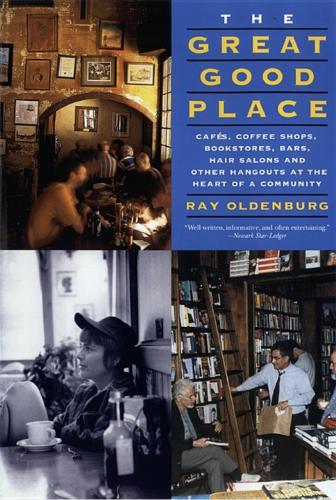
The Great Good Place: Cafes, Coffee Shops, Bookstores, Bars, Hair Salons, and Other Hangouts at the Heart of a Community
by
Ray Oldenburg
Published 17 Aug 1999
Can these not also be the subject of our art and our literature? HENRY FAIRLEE But aside from friends, there must also be a Place. I suppose that this is the Great Good Place that every man carries in his heart. . . . PETE HAMILL A community life exists when one can go daily to a given location at a given time and see many of the people one knows. PHILIP SLATER George Dane: I know what I call it . . . “The Great Good Place.” The Brother: I’ve put it myself a little differently . . . “The Great Want Met.” George Dane: Ah, yes—that’s it! from “The Great Good Place” by HENRY JAMES Contents PREFACE PREFACE TO THE SECOND EDITION INTRODUCTION ACKNOWLEDGMENTS PART I 1.
…
Acclaim for Ray Oldenburg and The Great Good Place “Ray Oldenburg is inspirational. He is the first to recognize and articulate the importance of the greeting place (third place) for the well-being of the individual and society at large.” —Ron Sher, President, Terranomics Development and founder, Third Place Books, Seattle, Washington “A day doesn’t go by that I don’t refer to Ray Oldenburg’s The Great Good Place. At a time when all great, good independent bookstores everywhere are under siege, we’re fortunate that Mr. Oldenburg has articulated our message so clearly.” —Mitchell Kaplan, owner, Books & Books, Miami, Florida “The Great Good Place has put into words and focus what I’ve been doing all my life, from the barbershop I remember as a child to the bookstore I now own.
…
—Mitchell Kaplan, owner, Books & Books, Miami, Florida “The Great Good Place has put into words and focus what I’ve been doing all my life, from the barbershop I remember as a child to the bookstore I now own. My goal at Horizon Books is to provide that third place in which people can “hang out.” Ray Oldenburg has defined those good places while still recognizing the magical chemistry they require. The Great Good Place is a book to read, to recommend, and to quote.” —Victor W. Herman, owner, Horizon Books, with locations in Traverse City, Petoskey, and Cadillac, Michigan “The great value of this book is that Mr. Oldenburg has given us an insightful and extremely useful new lens through which to look at a familiar problem. . .”
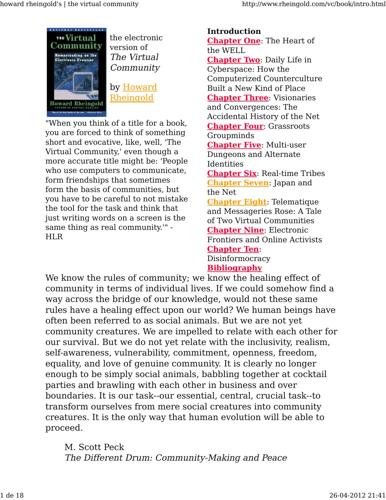
Howard Rheingold
by
The Virtual Community Homesteading on the Electronic Frontier-Perseus Books (1993)
Published 26 Apr 2012
Participating in a virtual community has not solved all of life's problems for me, but it has served as an aid, a comfort, and an inspiration at times; at other times, it has been like an endless, ugly, long-simmering family brawl. I've changed my mind about a lot of aspects of the WELL over the years, but the sense of place is still as strong as ever. As Ray Oldenburg proposed in The Great Good Place, there are three essential places in people's lives : the place we live, the place we work, and the place we gather for conviviality. Although the casual conversation that takes place in cafes, beauty shops, pubs, and town squares is universally considered to be trivial, idle talk, Oldenburg makes the case that such places are where communities can come into being and continue to hold together.
…
Minitel's messageries in France are into their second decade of a wildly popular, national, governmentsupported, written-word chat system. Fujitsu's Habitat combines a cartoonland graphical representation of participants and their environment with a synchronous chat system. IRC is Internet's pioneering multi-user chat system. IRC is the corner pub, the caf‚, the common room--the "great good place" of the Net. Most computers connected to Internet run a program called "talk" that enables people on different host computers to communicate screen-to-screen simultaneously. If I suspect that a person I know is online at a different site, I can issue a chat request through Internet. If that person is logged in, even if the computer is on the other side of the world, my chat request will go directly to the recipient's screen for immediate attention (rather than going to an e-mailbox for later attention).
…
The staged conventions of the political parties to anoint politicians 26-04-2012 21:46 howard rheingold's | the virtual community 24 de 26 http://www.rheingold.com/vc/book/10.html who had already been selected behind closed doors were a prominent example, but they were only part of a web of headlines, advertisements, and managed events. The replacement of old neighborhoods with modern malls, and caf‚s with fast-food franchises, was part of this "society of the spectacle," precisely because they help destroy the "great good places" where the public sphere lives. More than twenty years later, Debord looked back and emphasized this aspect of his earlier forecasts: For the agora, the general community, has gone, along with communities restricted to intermediary bodies or to independent institutions, to salons or caf‚s, or to workers in a single company.
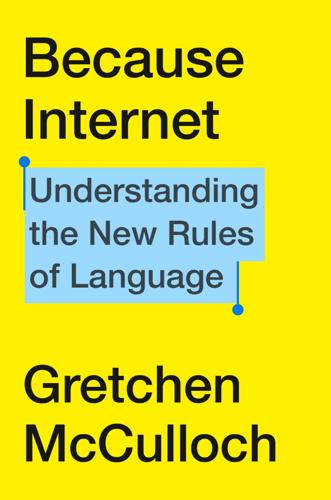
Because Internet: Understanding the New Rules of Language
by
Gretchen McCulloch
Published 22 Jul 2019
The idea of a third place is often invoked to explain the appeal of Starbucks: the first place is home, the second place is work, but people also need a third place to socialize that’s neither home nor work, like a coffeeshop. What Ray Oldenburg, the sociologist who coined the term in a 1989 book called The Great Good Place, had in mind was something more specific than just any convenient spot where you might stop by for a cup of joe. Oldenburg’s third places are first of all social centers, distinguished by an emphasis on conversation and playfulness, regular attendees who set the tone for newcomers, the freedom to come and go as you please, a lack of formal membership requirements, and a warm, unpretentious feeling of home away from home.
…
Georgetown University Press. pp. 119–132. idea of a third place: Matthew Dollinger. June 11, 2008. “Starbucks, ‘The Third Place,’ and Creating the Ultimate Customer Experience.” Fast Company. www.fastcompany.com/887990/starbucks-third-place-and-creating-ultimate-customer-experience. What Ray Oldenburg: Ray Oldenburg. 1989. The Great Good Place: Cafes, Coffee Shops, Community Centers, Beauty Parlors, General Stores, Bars, Hangouts, and How They Get You Through the Day. Paragon House. Examples include pubs: Leo W. Jeffres, Cheryl C. Bracken, Guowei Jian, and Mary F. Casey. 2009. “The Impact of Third Places on Community Quality of Life.”
…
The Atlantic. www.theatlantic.com/technology/archive/2016/08/cameras-with-constraints/494291/. Ian Bogost. May 3, 2018. “Why ‘Stories’ Took Over Your Smartphone.” The Atlantic. www.theatlantic.com/technology/archive/2018/05/smartphone-stories-snapchat-instagram-facebook/559517/. “Third place conversation”: Ray Oldenburg. 1989. The Great Good Place: Cafes, Coffee Shops, Community Centers, Beauty Parlors, General Stores, Bars, Hangouts, and How They Get You Through the Day. Paragon House. Popular email lists: (No author cited.) January 7, 2000. “Mailing List History.” Living Internet. www.livinginternet.com/l/li.htm. later technology such as: Lori Kendall. 2002.

The Coffee Book: Anatomy of an Industry From Crop to the Last Drop
by
Gregory Dicum
and
Nina Luttinger
Published 1 Jan 1999
Slywotzky and Kevin Mundt, “Hold the Sugar; Starbucks Corp.’s Business Success,” Across the Board, September 1996, 39. 2 Specialty Coffee Association of America and National Coffee Association, personal interviews, October 2005. 3 Information Resources, Inc., 2004. 4 Howard Schultz and Dori Jones Yang, Pour Your Heart into It: How Starbucks Built a Company One Cup at a Time (New York: Hyperion, 1997), 120–21. 5 Ray Oldenburg, The Great Good Place (New York: Paragon House, 1989), 296. 6 Faith Popcorn, The Popcorn Report (New York: HarperBusiness, 1992), 39–40. 7 Unscrupulous blending has also had a hand in this travesty—mixing a little genuine Kona into a Central American blend and calling it “Kona” or “Kona Blend.” 8 The growth of the specialty coffee industry has also helped cultivate a rising demand for specialty teas, which, like coffees, focus on distinguishing themselves based on origin, cultivation, processing, and blending techniques.
…
New York: W. W. Norton and Co., 1998. McDowell, Bill. “The Bean Counters.” Restaurants & Institutions, December 1995. McKenna, Terence. Food of the Gods. New York: Bantam Books, 1992. National Coffee Association. Winter Drinking Survey. New York: National Coffee Association, 2005. Oldenburg, Ray. The Great Good Place. New York: Paragon House, 1989. Peel, Carl. “Los Angeles, a Microcosm of the Country.” Tea and Coffee Trade Journal 169, no. 4 (April 1997): 16–28. Popcorn, Faith. The Popcorn Report. New York: HarperBusiness, 1992. Quinn, James P., Scientific Marketing of Coffee. New York: Tea & Coffee Trade Journal Co., 1960.
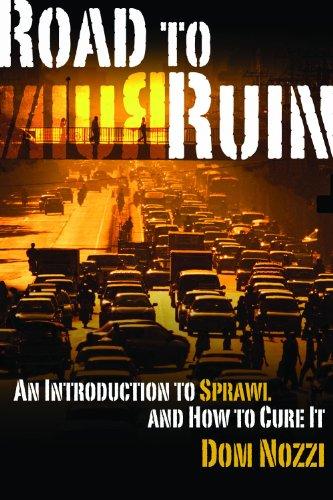
Road to ruin: an introduction to sprawl and how to cure it
by
Dom Nozzi
Published 15 Dec 2003
Free parking, on the other hand, is not taxed.22 An IRS rule that assigned an income value to what is now free parking would help encourage commuters to switch to noncar travel.The 20th Century was about getting around. The 21st Century will be about staying in a place worth staying in. —Jim Kunstler The most important task of the urbanist is controlling size. —David Mohney As sociology professor and planning consultant Ray Oldenburg points out in The Great Good Place: Cafes, Coffee Shops, Community Centers, Beauty Parlors, General Stores, Bars, Hangouts, and How They Get You Through the Day, segregation, isolation, compartmentalization, and sterilization seem to be today’s guiding principles for community growth and renewal. Desirable experiences occur in places conducive to them, Oldenburg claims, or they do not occur at all.
…
Northeastern Illinois Planning Commission. 1990 Land Use in Northeastern Illinois Counties, Minor Civil Divisions and Chicago Community Areas. Chicago: Northeastern Illinois Planning Commission, 1995. Nozzi, D. “West Palm Beach FL: Back From the Brink.” http://user.gru. net/domz/palm.htm. Accessed 28 March 2002. Oldenburg, R. The Great Good Place. New York: Marlowe, 1989. “Passes Help People Hop onto the Bus.” Transportation Exchange Update, April 1994. Pederson, E. O. Transportation in Cities. New York: Pergamon, 1980. Pew Center for Civic Journalism. “Top Local Problems.” Princeton Survey Research Associates. College Park, Md. http://www.pewcenter.org/doingcj/ research/r_st2000nat1.htm1#crime.

Age of the City: Why Our Future Will Be Won or Lost Together
by
Ian Goldin
and
Tom Lee-Devlin
Published 21 Jun 2023
An experimental investigation of algorithm effects on political polarization’, Journal of Broadcasting & Electronic Media, Vol. 64, No. 2. 25 Nordbrandt, M., 2021, ‘Affective polarization in the digital age: testing the direction of the relationship between social media and users’ feelings for out-group parties’, New Media & Society. 26 Rathje, S., et al., 2020, ‘Out-group animosity drives engagement on social media’, Proceedings of the National Academy of Sciences, Vol. 118, No. 26. 27 Haidt, ‘Why the past 10 years of American life have been uniquely stupid’. 28 Ibid. 29 Oldenburg, R., 1989, The Great Good Place (De Capo Press). 30 Cited in Meltzer, M., 2002, Mark Twain Himself: A Pictorial Biography (University of Missouri Press), p. 82. 31 Wirth, L., 1938, ‘Urbanism as a way of life’, American Journal of Sociology, Vol. 44, No. 1. 32 Ibid., pp. 1 and 13. 33 Fischer, C., 1982, To Dwell Among Friends (University of Chicago Press). 34 Mumford, L., 1938, The Culture of Cities (reprint by Open Road Media, 2016, accessed online at Perlego.com). 35 Putnam, Bowling Alone. 36 Woetzel, J., et al., 2018, ‘Smart cities: digital solutions for a more livable future’, McKinsey Global Institute (mckinsey.com). 37 Yeung, P., 2022, ‘“It’s a beautiful thing”: how one Paris district rediscovered conviviality’, Guardian.
…
O’Sullivan, F., 2019, ‘Paris wants to grow “urban forests” at famous landmarks’, Bloomberg News. Oakes, K., 2020, ‘How cutting your food waste can help the climate’, BBC (bbc.com). OECD Data, 2021, ‘Net ODA’ (data.oecd.org). OECD, 2015, ‘The metropolitan century’ (oecd.org). Oldenburg, R., 1989, The Great Good Place (De Capo Press). Partridge, J., 2022, ‘Google in $1bn deal to buy Central Saint Giles offices in London’, Guardian. Paulas, R., 2017, ‘The death of the suburban office park and the rise of the suburban poor’, Pacific Standard Magazine. Paullin, C. and Wright J., 1932, Atlas of the Historical Geography of the United States (reprint by Greenwood Press, 1976).

The Lonely Century: How Isolation Imperils Our Future
by
Noreena Hertz
Published 13 May 2020
Think of the corner shops in Victorian England, whose practice of providing goods on credit to locals served as a lifeline for many between paydays.23 Or how, since the turn of the nineteenth century, barber shops have provided sanctuary for many African Americans, serving as places not only to get haircuts but also community spaces where men gather to play chess and dominoes, whilst also discussing politics and local affairs.24 Some local businesses even become what sociologist Ray Oldenburg called, in his 1989 book The Great Good Place, ‘third places’: neither home, nor work, but rather gathering spaces abuzz with conversation where regulars meet up and people of different social and economic backgrounds interact, form bonds, exchange ideas and share opinions. These are places where, as Oldenburg wrote, ‘we all feel at home and comfortable’.25 They play critical roles in maintaining our social fabric because they are places where we can practise community and democracy, in their most inclusive form – places where, as in a book club, people may bring wildly different world views and lived experiences that must be reconciled, calibrated, understood and discussed in order for the space to thrive.
…
Norris, Pippa, and Ronald Inglehart, Cultural Backlash: Trump, Brexit, and Authoritarian Populism (Cambridge: Cambridge University Press, 2019). Nowak, Martin A., and Roger Highfield. SuperCooperators: Beyond the Survival of the Fittest: Why Cooperation, Not Competition, is the Key of Life (Edinburgh: Canongate, 2012). Oldenburg, Ray. The Great Good Place (Philadelphia: Da Capo, 1999). Piketty, Thomas. Capital in the Twenty-First Century. Translated by Arthur Goldhammer (Cambridge, Mass: Harvard University Press, 2014). Putnam, Robert. Bowling Alone: The Collapse and Revival of American Community (New York: Simon & Schuster, 2000). Quart, Alissa.
…
See for example Randall Collins, ‘Interaction Rituals and the New Electronic Media’, The Sociological Eye, 25 January 2015, https://sociological-eye.blogspot.com/2011/01/interaction-rituals-and-new-electronic.html. 23 Charles Walter Masters, The Respectability of Late Victorian Workers: A Case Study of York, 1867–1914 (Cambridge Scholars Publishing, 2010). 24 National Museum of African American History & Culture, ‘The Community Roles of the Barber Shop and Beauty Salon,’ 2019, https://nmaahc.si.edu/blog/community-roles-barber-shop-and-beauty-salon. 25 Ray Oldenburg, The Great Good Place (Da Capo Press, 1999), p.22. Note that the ‘universal’ accessibility of such ‘third places’ is itself an idealistic assumption that does not necessarily take into account barriers that have been widely exposed since Oldenburg first wrote, such as the racism that has routinely rendered these same ‘third places’ uncomfortable and/or inaccessible to people of colour.
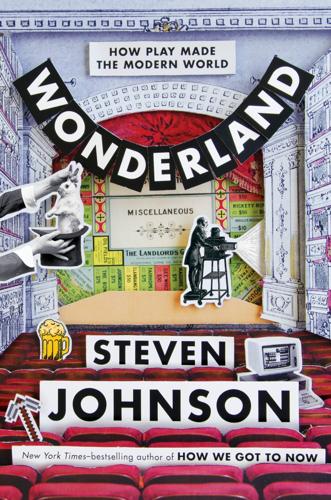
Wonderland: How Play Made the Modern World
by
Steven Johnson
Published 15 Nov 2016
Habermas argued that the political and intellectual revolutions of the eighteenth century had been facilitated by the creation of this new public sphere, largely housed in semipublic gathering places like taverns and pubs. (A few decades after Habermas, the American sociologist Ray Oldenburg would develop a similar thesis in a book called The Great Good Place—coining the now-common expression “the third place” for these venues.) For Habermas, the public sphere had a profoundly egalitarian bias, creating “a kind of social intercourse that, far from presupposing equality of status, disregarded status altogether. [Participants] replaced the celebration of rank with a tact befitting equals.”
…
“Subjective Complexity, Familiarity, and Liking for Popular Music.” Psychomusicology: A Journal of Research in Music Cognition 14:1–2 (1995): 77. Ohl, John F., and Joseph Earl Arrington. “John Maelzel, Master Showman of Automata and Panoramas.” The Pennsylvania Magazine of History and Biography 84:1 (1960): 56–92. Oldenburg, Ray. The Great Good Place: Café, Coffee Shops, Community Centers, Beauty Parlors, General Stores, Bars, Hangouts, and How They Get You Through the Day. St. Paul, MN: Paragon House Publishers, 1989. Pinker, Steven. How the Mind Works. New York: W. W. Norton & Company, 1999. Poivre, Pierre. Travels of a Philosopher; Or, Observations on the Manners and Arts of Various Nations in Africa and Asia.
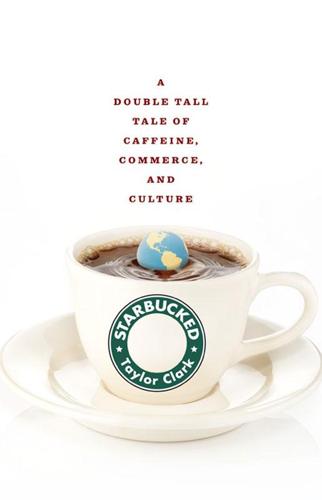
Starbucked: A Double Tall Tale of Caffeine, Commerce, and Culture
by
Taylor Clark
Published 5 Nov 2007
The perfect catchphrase for the coffee-house’s vital social function happened to be languishing in disuse, just waiting for someone to seize on it. When Harry Roberts found himself struggling to put the communal appeal of Starbucks into words, he shared his trouble with his wife, who soon stumbled across the solution in a bookstore: an out-of-print book called The Great Good Place, by a sociology professor named Ray Oldenburg. In his book, Oldenburg describes America’s need for the neutral, safe, public gathering spots that had gradually disappeared; he calls this nexus the “third place,” with home and work being places one and two. His words were eerily prescient — he even pointed out that third places generally revolve around beverages, like with tea-houses and pubs.
…
Putnam, Bowling Alone: The Collapse and Revival of American Community (New York: Simon & Schuster, 2000); David Brooks, Bobos in Paradise: The New Upper Class and How They Got There (New York: Simon & Schuster, 2000); Juliet B. Schor, The Overspent American: Why We Want What We Don’t Need (New York: HarperPerennial, 1998); and Ray Oldenburg, The Great Good Place: Cafés, Coffee Shops, Bookstores, Bars, Hair Salons, and Other Hangouts at the Heart of a Community (New York: Marlowe, 1999). Page 75. The Staffan Linder information comes from de Graaf, Wann, and Naylor, Affluenza: The All-Consuming Epidemic. Page 76. Terry Lefton, “Schultz’s Caffeinated Crusade,” Brandweek, July 5, 1999.

Affluenza: The All-Consuming Epidemic
by
John de Graaf
,
David Wann
,
Thomas H Naylor
and
David Horsey
Published 1 Jan 2001
Alex Molnar in discussion with John de Graaf, April 1996. 13. Interview with psychologist David Elkind, October 1993. 14. David Korten, The Post-Corporate World: Life after Capitalism (San Francisco: Kumarian/Berrett-Koehler, 2000), 33. 15. Jennifer Gailus in discussion with John de Graaf, May 1996. CHAPTER 8 1. Ray Oldenburg, The Great Good Place: Cafes, Coffee Shops, Bookstores, Bars, Hair Salons, and Other Hangouts at the Heart of a Community (New York: Paragon House, 1989), xv. 2. James Kuntsler in discussion with David Wann, March 1997. 3. Robert Putnam, Bowling Alone: The Collapse and Revival of American Community (New York: Simon & Schuster, 2000), 49. 4.
…
Deep Ecology, Voluntary Simplicity. Portland, Ore.: Northwest Earth Institute Discussion Courses, 1998. O’Connell, Brian. Civil Society: The Underpinnings of American Democracy. Medford, Mass.: Tufts University Press, 1999. O’Hara, Bruce. Working Harder Isn’t Working. Vancouver, BC: New Star, 1993. Oldenburg, Ray. The Great Good Place: Cafes, Coffee Shops, Bookstores, Bars, Hair Salons, and Other Hangouts at the Heart of a Community. New York: Paragon House, 1989. O’Neill, Jessie. The Golden Ghetto. Center City, Minn.: Hazelden, 1997. Orwell, George. 1984. New York: Signet Books, 1981. Packard, Vance.The Waste Makers.
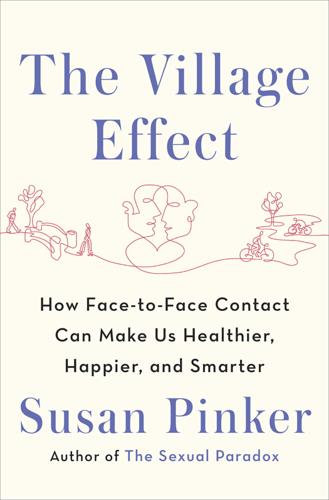
The Village Effect: How Face-To-Face Contact Can Make Us Healthier, Happier, and Smarter
by
Susan Pinker
Published 30 Sep 2013
Myers, “Close Relationships and Quality of Life,” in Well-being, ed. Kahneman, Diener, and Schwarz. 8. For more about the characteristics of “third places,” see Ray Oldenburg, The Great Good Place: Cafes, Coffee Shops, Community Centers, Beauty Parlors, General Stores, Bars, Hangouts, and How They Get You Through the Day (New York: Paragon, 1989); Ray Oldenburg, Celebrating the Third Place: Inspiring Stories about the “Great Good Places” at the Heart of Our Communities (New York: Marlowe, 2000). Thanks are due to my brother Steve for introducing me to the term meatspace. 9. Kyungjoon Lee et al., “Does Collocation Inform the Impact of Collaboration?”
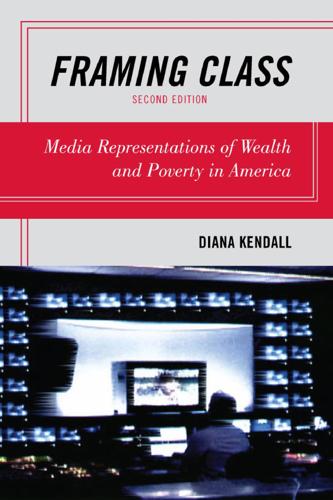
Framing Class: Media Representations of Wealth and Poverty in America
by
Diana Elizabeth Kendall
Published 27 Jul 2005
id=97 (accessed July 3, 2004). 40. Richard Harwood, “Framing a Story: What’s It Really About?” Pew Center for Civic Journalism, 2004, http://www.pewcenter.org/doingcj/videos/framing.html (accessed July 3, 2004). 41. Smith, “Developing New Reflexes in Framing Stories.” 42. “Finding Third Places.” 43. Ray Oldenburg, The Great Good Place: Cafés, Coffee Shops, Bookstores, Bars, Hair Salons and Other Hangouts at the Heart of a Community (New York: Marlowe, 1999), 16. 44. “The State of the News Media 2004,” Committee of Concerned Journalists, http://www.journalism.org (accessed June 17, 2004). 45. Mantsios, “Media Magic,” 108. 9781442202238.print.indb 262 2/10/11 10:47 AM Notes to Pages 228–229 263 46.
…
“Keeping Ahead of the Joneses.” New York Times, November 24, 2002, WK4. Ohlemacher, Stephen “With Income Tax Cuts Expiring, Rates Could Rise for Wealthy—but What about Middle Class?” Star Tribune, July 22, 2010. www.star tribune.com/lifestyle/99034509.html (accessed August 7, 2010). Oldenburg, Ray. The Great Good Place: Cafés, Coffee Shops, Bookstores, Bars, Hair Salons and Other Hangouts at the Heart of a Community. New York: Marlowe, 1999. Olsen, Eric. “Down and Out in Santa Monica.” Blogcritics. January 6, 2003. www .blogcritics.org/archives/2003/01/06/200033.php (accessed February 22, 2004). “Organized Crime and the Labor Unions.”
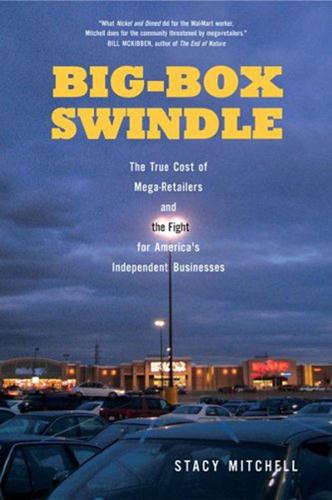
Stacy Mitchell
by
Big-Box Swindle The True Cost of Mega-Retailers
and
the Fight for America's Independent Businesses (2006)
To function as a third place, a business must be relatively modest in scale, be embedded in a neighborhood or small downtown, and provide space for loitering and casual interaction. These essential characteristics mean that third places are almost always locally owned.28 The personal and civic benefits of third places are numerous, Oldenburg COMMUNITY LIFE 93 argues in his book The Great Good Place. Third places engender a feeling of belonging that contributes to a person’s well-being. They nurture the web of connections that knit communities together, and act as “levelers” by bridging diƒerences of background and social rank. They cultivate the habit of association: those who frequently engage in casual socializing with their neighbors are more apt to start and join formal civic and community organizations, which in turn encourage greater participation in the political process.
…
Jack Gold, interview, Oct. 4, 2005; John McGettrick, cochair of the Red Hook Civic Association, interview, Sept. 18, 2005; Margaret Foster, “To Clear Site for Home Depot, Owner Illegally Demolishes Nashville House,” Preservation Magazine, Oct. 5, 2005. 27. Store counts from Starbucks.com; Brad Wong, “Great Wall Breached: Starbucks Sets Up Shop,” Seattle Post-Intelligencer, Sept. 22, 2005. 28. Ray Oldenburg, The Great Good Place: Cafes, Coƒee Shops, Bookstores, Bars, Hair Salons, and Other Hangouts at the Heart of Community, 2nd ed. (New York: Marlowe & Company, 1999). 29. Ibid., 21–85; 70. 30. Hollie Lund, “Testing the Claims of New Urbanism: Local Access, Pedestrian Travel, and Neighboring Behaviors,” Journal of the American Planning Association, Sept. 22, 2003, 414–29. 31.

Retrofitting Suburbia, Updated Edition: Urban Design Solutions for Redesigning Suburbs
by
Ellen Dunham-Jones
and
June Williamson
Published 23 Mar 2011
The library’s architect is Croxton Collaborative of New York, experts in green building. 28 Linda Saslow, “Nation’s ‘First Suburb’ Aims to Be Most ’Green.’” Chapter 4 1 Ray Oldenburg, The Great Good Place: Cafés, Coffee Shops, Community Centers, Beauty Parlors, General Stores, Bars, Hangouts, and How They Get You through the Day (New York: Marlowe, 1997), and Celebrating the Third Place: Inspiring Stories about the “Great Good Places” at the Heart of our Communities (New York: Marlowe, 2001). 2 Other sociologists have begun correlating the significance of third places with higher rates of civic engagement and positive socioeconomic outcomes, arguing that local differentiations between places factor more than ever in a global capitalist system.
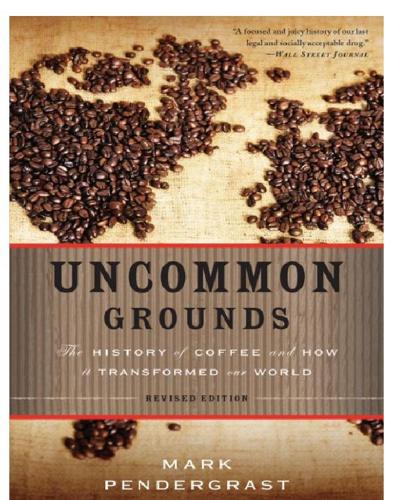
Uncommon Grounds: The History of Coffee and How It Transformed Our World
by
Mark Pendergrast
Published 2 Jan 2000
As he himself has said, “My story is as much one of perseverance and drive as it is of talent and luck. I willed it to happen. I took my life in my hands, learned from anyone I could, grabbed what opportunity I could, and molded my success step by step.” In 1989 the sociologist Ray Oldenburg published The Great, Good Place, a lament over the passing of community meeting places like the old country store or soda fountain. The book contained an entire chapter on coffeehouses, concluding: “The survival of the coffeehouse depends upon its ability to meet present day needs and not those of a romanticized past.” Schultz loved the book and adopted Oldenburg’s academic term, christening Starbucks as a “third place” beyond home or work, “an extension of people’s front porch,” where people could gather informally.
…
.; Manias, Panics and Crashes (1989), by Charles P. Kindleberger; The Boston Tea Party (1964), by Benjamin Woods Labaree; The Fifties (1977), by Douglas T. Miller and Marion Nowak; The New Winter Soldiers (1996), by Richard R. Moser; The Sugar Trust (1964), by Jack Simpson Mullins; Fighting Liberal (1945), by George W. Norris; The Great Good Place (1989), by Ray Oldenburg; The Early English Coffee House (1893), by Edward Robinson; We Say No to Your War (1994), by Jeff Richard Schutts; Hard Times (1970), by Studs Terkel; History and Reminiscences of Lower Wall Street and Vicinity (1914), by Abram Wakeman; The Life of Billy Yank (1952), by Bell Irvin Wiley.
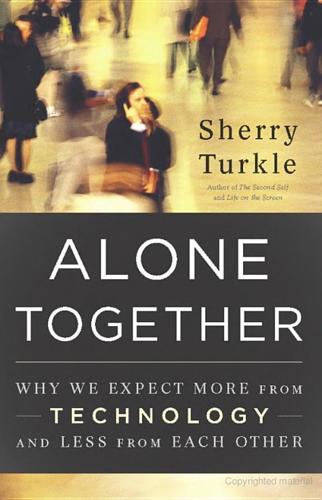
Alone Together
by
Sherry Turkle
Published 11 Jan 2011
But in the main, we would not think of confessing our secrets to the members of our clubs. But we have come to a point at which it is near heresy to suggest that MySpace or Facebook or Second Life is not a community. I have used the word myself and argued that these environments correspond to what sociologist Ray Oldenberg called “the great good place.”8 These were the coffee shops, the parks, and the barbershops that used to be points of assembly for acquaintances and neighbors, the people who made up the landscape of life. I think I spoke too quickly. I used the word “community” for worlds of weak ties.9 Communities are constituted by physical proximity, shared concerns, real consequences, and common responsibilities.
…
So, online, we read about people admitting to murder (these are often interpreted as soldiers writing about the experience of war) and enjoying child pornography: “A recent message on ivescrewedup.com reads, ‘I have killed four people. One of them was a 17 year old boy.’” See Fantz, “Forgive Us Father.” 8 Ray Oldenberg. The Great Good Place: Cafés, Coffee Ships, Community Centers, Beauty Parlors, General Stores, Bars, Hangouts, and How They Get You Through the Day (New York: Paragon House, 1989). On virtual environments as communities, see Howard Rheingold, The Virtual Community: Homesteading on the Electronic Frontier (Reading, MA: Addison Wesley, 1993). 9 There is, too, the word “world.”
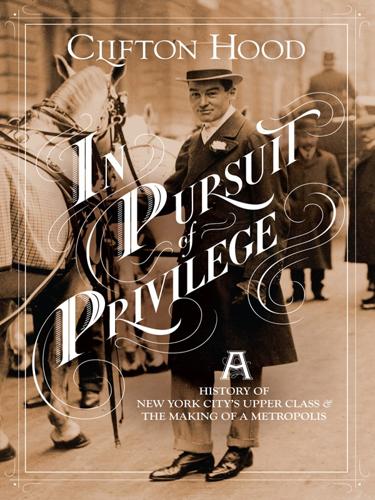
In Pursuit of Privilege: A History of New York City's Upper Class and the Making of a Metropolis
by
Clifton Hood
Published 1 Nov 2016
Adam Arenson, “Libraries in Public Before the Age of Public Libraries: Interpreting the Furnishings and Design of Athenaeums and Other ‘Social Libraries,’ 1800–1860,” 41, in The Library as Place: History, Community, and Culture, ed. John E. Buschman and Gloria J. Leckie (Westport, Conn.: Libraries Unlimited, 2006). 67. Ray Oldenburg, The Great Good Place: Cafés, Coffee Shops, Community Centers, Beauty Parlors, General Stores, Bars, Hangouts, and How They Get You Through the Day (New York: Paragon House, 1989), 16. 68. Laura Lewison, “Lawn Bowling,” 724, in Jackson, Encyclopedia of New York City; Steven A. Reiss, “Horse Racing,” 611–12, in Jackson, The Encyclopedia of New York City; Austin Baxter Keep, History of the New York Society Library (New York: De Vinne, 1908), 123–78; Walter Friedman, “Scots,” 1160–61, in Jackson, The Encyclopedia of New York City; Burrows and Wallace, Gotham, 172–75, 248; New York Gazette (Weyman’s), February 23, 1761, June 6, 1763, November 28, 1763; New York Mercury, May 5, 1755; and Singleton, Social New York, 40–45. 69.
…
(New York: n.p., 1889), 31–32; Constitution, By-Laws, and Rules of the Harvard Club of New York City with List of Officers and Members (New York: n.p., 1888), 24–27; Officers, Members, Constitution and By-Laws of the Union Club, 96–98; Porzelt, Metropolitan Club, 57–104; New York Times, February 12, 1886, February 13, 1890, September 6, 1891, February 25, 1894, May 9, 1897; Louise L. Stevenson, The Victorian Homefront: American Thought and Culture, 1860–1880 (Ithaca, N.Y.: Cornell University Press, 1991), xxiii–xxxv; Jane Tompkins, West of Everything: The Inner Life of the Westerns (New York: Oxford University Press, 1992), 3–19, 43; and Ray Oldenburg, The Great Good Place: Cafés, Coffee Shops, Community Centers, Beauty Parlors, General Stores, Bars, Hangouts, and How They Get You Through the Day, 1st ed. (New York: Paragon, 1989), 16. 63. New York Times, June 17 and 18, 1924, March 4, 1928, October 8, 1949; Harper S. Mott Diary, 1886, entries for May 3 and 5, 1886, Library of the New-York Historical Society, New York, N.Y.

Suburban Nation
by
Andres Duany
,
Elizabeth Plater-Zyberk
and
Jeff Speck
Published 14 Sep 2010
Newman, Peter, and Jeff Kenworthy. Winning Back the Cities. Sydney: Photo Press, 1996. Norquist, John. The Wealth of Cities: Revitalizing the Centers of American Life. New York: Perseus Books, 1999. Nyhan, David. “For the Planet’s Sake, Hike the Gas Tax.” The Boston Globe, November 28, 1997: A27. Oldenburg, Ray. The Great Good Place: Cafés, Coffee Shops, Bookstores, Bars, Salons, and Other Hangouts at the Heart of a Community. New York: Marlowe & Co., 1999. Orfield, Myron. Metropolitics: A Regional Agenda for Community and Stability. Washington, D.C.: The Brookings Institute, 1997. Palmer, Thomas. “Pacifying Road Warriors.”

Palaces for the People: How Social Infrastructure Can Help Fight Inequality, Polarization, and the Decline of Civic Life
by
Eric Klinenberg
Published 10 Sep 2018
largest and most heterogeneous public space: Stéphane Tonnelat and William Kornblum, International Express: New Yorkers on the 7 Train (New York: Columbia University Press, 2017). “participator rather than spectator”: MassObservation, The Pub and the People (1943; repr., London: Cresset Library, 1987), 17. people in public can feel like they’re at home: Ray Oldenburg, The Great Good Place: Cafés, Coffee Shops, Bookstores, Bars, Hair Salons and Other Hangouts at the Heart of a Community (Cambridge, MA: Da Capo Press, 1989). the air that pedestrians breathe a little cleaner: See Vanessa Quirk, “The 4 Coolest ‘High Line’ Inspired Projects,” ArchDaily, July 16, 2012, https://www.archdaily.com/254447/the-4-coolest-high-line-inspired-projects.
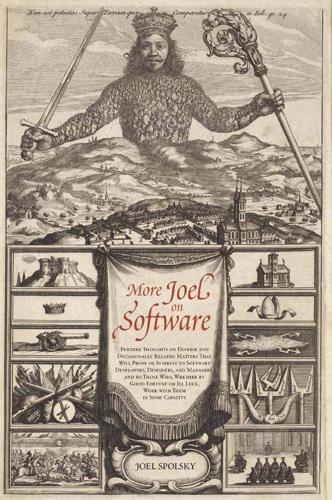
More Joel on Software
by
Joel Spolsky
Published 25 Jun 2008
Instead of building usability labs, they’ll go out into the field and write ethnographies. And hopefully, we’ll figure out the new principles of social interface design. It’s going to be fascinating . . . as fun as user interface design was in the 1980s . . . so stay tuned. sixteen BUILDING COMMUNITIES WITH SOFTWARE Monday, March 3, 2003 In his book, The Great Good Place (Da Capo Press, 1999), social scientist Ray Oldenburg talks about how humans need a third place, besides work and home, to meet with friends, have a beer, discuss the events of the day, and enjoy some human interaction. Coffee shops, bars, hair salons, beer gardens, pool halls, clubs, and other hangouts are as vital as factories, schools, and apartments.

Ghost Road: Beyond the Driverless Car
by
Anthony M. Townsend
Published 15 Jun 2020
98th Annual Meeting of the Transportation Research Board, November 14, 2018, https://usa.streetsblog.org/wp-content/uploads/sites/5/2019/01/19-04931-Transit-Trends.pdf. 215bus ridership declined 20 percent: Matt Tinoco, “Metro’s Declining Ridership Explained,” Curbed LA, August 29, 2017, https://la.curbed.com/2017/8/29/16219230/transit-metro-ridership-down-why. 215ride-hail’s sapping effect on bus ridership: Graehler et al., “Understanding the Recent Transit Ridership Decline.” 216driverless city buses underway in Edinburgh: “Edinburgh, UK,” Initiative on Cities and Autonomous Vehicles, accessed September 10, 2019, https://avsincities.bloomberg.org/global-atlas/europe/uk/edinburgh-uk. 216riders a high-tech experience: “Nobina and Scania Pioneer Full Length Autonomous Buses in Sweden,” Nobina, February 20, 2019, https://www.nobina.com/en/press/archive/nobina-and-scania-pioneer-full-length-autonomous-buses-in-sweden/. 216feature single-passenger self-driving pods: “Toyota Partnership to Pilot Autonomous Vehicle Transportation System,” Nikkei Asian Review, October 8, 2018, https://asia.nikkei.com/Business/Companies/Toyota-partnership-to-pilot-autonomous-vehicle-transportation-system. 216Combine Jelbi with a road-pricing platform: David Zipper, “Bikeshare, Scooters, Cars, Trains, Bridges: One Agency to Rule Them All,” CityLab, November 30, 2018, https://www.citylab.com/perspective/2018/11/transit-city-department-scootershare-ridehail-bikeshare/576982/. 217“the presence of an operator ensures”: “Principles for the Transit Workforce in Automated Vehicle Legislation and Regulation,” Transport Trades Department, March 11, 2019, https://ttd.org/policy/principles-for-the-transit-workforce-in-automated-vehicle-legislation-and-regulations/. 217“third space”: Ray Oldenburg, The Great Good Place: Coffee Shops, Bookstores, Bars, Hair Salons, and Other Hangouts at the Heart of a Community (Cambridge, MA: Da Capo Press, 2000), 20. 217“a half-dozen startups are testing”: Aarian Marshall, “Self-Driving Trucks Are Ready to Do Business in Texas,” Wired, August 6, 2019, https://www.wired.com/story/self-driving-trucks-ready-business-texas/. 217encouraging night delivery: Haag and Hu, “1.5 Million Packages a Day.” 217how much freight moves: Alain Bertaud, Order without Design: How Markets Shape Cities (Boston: MIT University Press, 2018), 30. 218road traffic in the developed world: Bertaud, Order without Design, 30. 218number of store trips they take by as much as half: Joann Muller, “One Big Thing: The Rise of Driverless Delivery,” Axios, November 28, 2018, https://www.axios.com/autonomous-vehicles-could-be-used-for-deliveries-3fb12a24-3e66-4d8b-b678-a2fbb47d05cb.html. 218more online shopping could empty them: For an excellent overview of trends and interacting issues, see Joe Cortright, “Does Cyber Monday Mean Delivery Gridlock Tuesday?”

The Impossible City: A Hong Kong Memoir
by
Karen Cheung
Published 15 Feb 2022
GO TO NOTE REFERENCE IN TEXT multiplying the late-night noise complaints: Karen Cheung, “In Hong Kong’s Increasingly Gentrified Western District, Residents Beg Bars for a Good Night’s Sleep,” Hong Kong Free Press, April 29, 2018, https://hongkongfp.com/2018/04/29/hong-kongs-increasingly-gentrified-western-district-residents-beg-bars-good-nights-sleep/. GO TO NOTE REFERENCE IN TEXT “I think Hong Kong people lack culture”: Lung Ying-tai and Andreas Walther, Dear Andreas (Taiwan: 天下雜誌, 2007). GO TO NOTE REFERENCE IN TEXT the concept of the third place: Ray Oldenburg, The Great Good Place: Cafés, Coffee Shops, Bookstores, Bars, Hair Salons, and Other Hangouts at the Heart of a Community (Boston: Da Capo Press, 1999). GO TO NOTE REFERENCE IN TEXT Daniel Lee and his two partners: “讀賣書人﹕序言書室 小眾交流 以書聚賢 [The Niche Discussions at Hong Kong Reader: Gathering Good People Through Books],” MingPao Canada, March 7, 2014, http://www.mingpaocanada.com/tor/htm/News/20140307/HK-gfk1_er.htm.

All Your Base Are Belong to Us: How Fifty Years of Video Games Conquered Pop Culture
by
Harold Goldberg
Published 5 Apr 2011
The experience was totally unlike the bingo games on the Web at the time, primarily single-player affairs that made you refresh your browser each time you wanted a new bingo ball to drop. Kapulka, an avid reader and thinker, was concerned with what’s called the Third Place, which Ray Oldenburg, an urban sociologist, so succinctly espoused in his 1989 book, The Great Good Place. Kapulka thought, “You’ve got the home, work, and this public area where you socialize, a pub, a restaurant, a bingo hall. There’s a big difference between sitting in a bar drinking by yourself and sitting at home drinking by yourself, almost like the difference between aloneness and loneliness.”
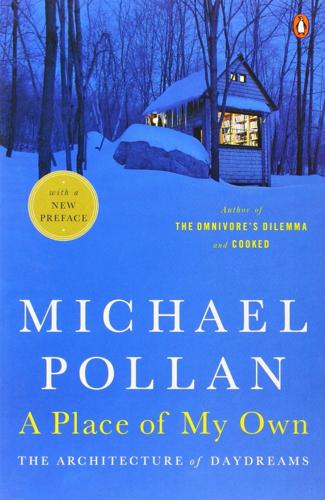
A Place of My Own: The Architecture of Daydreams
by
Michael Pollan
Published 15 Jan 1997
Jackson is doubtful that architects can design memorable places like these, at least on purpose; for him habitation will trump design every time, and that is how it should be. Certainly it is true that some of the best places are not made so much as remade, as people find new and unforeseen ways to inhabit them over time. Alexander, an architect himself, has more faith that an architect can design the “great good place,” but not entirely by himself and probably not all at once. This is because no single individual can possibly know enough to make from scratch something as complex and layered and thick as a great place; for the necessary help, he will need to invoke the past, and also the future. The first move is obvious enough: The architect borrows from the past by adapting successful patterns, the ones that have been proven to support the kind of life the place hopes to house—porches and watching the world go by, for example.

Pour Your Heart Into It: How Starbucks Built a Company One Cup at a Time
by
Howard Schultz
and
Dori Jones Yang
In the 1990s, coffee bars became a central component of the American social scene in part because they fulfilled the need for a nonthreatening gathering spot, a “third place” outside of work and home. Ray Oldenburg, a Florida sociology professor, wrote most eloquently of this need in his book, The Great Good Place (1989). Oldenburg’s thesis is that people need informal public places where they can gather, put aside the concerns of work and home, relax, and talk. Germany’s beer gardens, England’s pubs, and French and Viennese cafés created this outlet in people’s lives, providing a neutral ground where all are equal and conversation is the main activity.
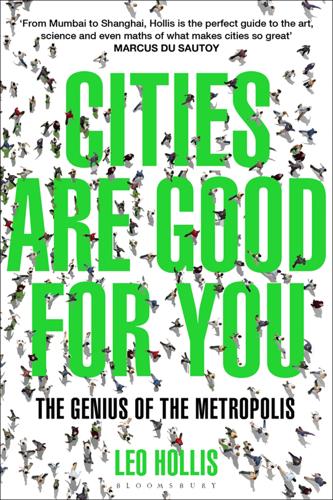
Cities Are Good for You: The Genius of the Metropolis
by
Leo Hollis
Published 31 Mar 2013
Video Camera Surveillance in New York City and the Need for Public Oversight, New York Civil Liberties Union, Fall 2006 New York, Dept of Design and Construction Active Design Guidelines, NYC, 2010 Norris, C., McCahill, M. and Wood, D., The Growth of CCTV: A Global Perspective, Surveillance and Society, www.surveillance-and-society.org/cctv.htm Novak, M. and Highfield, R., SuperCooperators: Beyond the Survival of the Fittest, Canongate, 2011 Nunns, A. and Idle, N., Tweets from Tahrir, OR Books, 2011 Oldenburg, C., The Great Good Place, Da Capo, 1999 O’Neill, O., A Question of Trust, CUP, 2002 Ostrom, E., Governing the Commons: The Evolution of Institutions for Collective Action, CUP 1990 Owen, D., Green Metropolis, Riverhead, 2010 Owen, D., ‘The Efficiency Dilemma’, New Yorker, 20 December 2010 Patel, S. and Arputham, J., ‘An Offer of Partnership or a Promise of Conflict in Dharavi, Mumbai’, Environment and Urbanisation, 2007 Patel, S. and Arputham, J., ‘Plans for Dharavi’, Environment and Urbanisation, 2008 Patel, S., Burra, S. and D’Cruz, C., ‘Slum/Shack Dwellers International (SDI) – Foundations to Treetops’, Environment and Urbanisation, 2001 Patel, S., Arputham, J., Burra, S. and Savchuk, K., ‘Getting the Information Base for Dharavi’s Redevelopment’, Environment and Urbanisation, 2009 Patel, S. and Mitlin, D., ‘Gender Issues and Slum/Shack Dweller Foundation’, IIED, Gender and Urban Federations, 2007 Pearce, F., Peoplequake: Mass Migration, Ageing Nations and the Coming Population Crash, Eden Project Books, 2010 Pereira, F., Vaccari, A., Glardin, F., Chiu, C. and Ratti, C., ‘Crowd Sensing in the Web: Analysing the Citizen Experience in the Urban Space’, senseable.mit.edu/papers/publications.html Perlman, J., Favela: Decades of Living on the Edge in Rio de Janeiro, OUP, 2012 Peter, P.
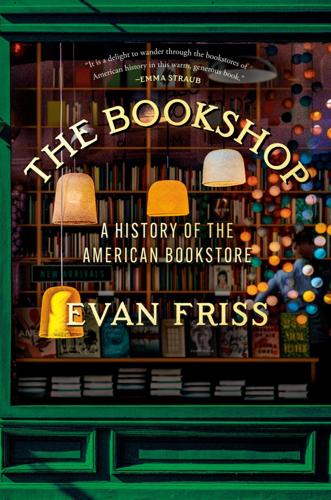
The Bookshop: A History of the American Bookstore
by
Evan Friss
Published 5 Aug 2024
Evans, and Jonathan Kelley, “Scholarly Culture: How Books in Adolescence Enhance Adult Literacy, Numeracy, and Technology Skills in 31 Societies,” Social Science Research 77 (January 2019): 1–15. GO TO NOTE REFERENCE IN TEXT Customers also make: For more on the concept of “third spaces,” see Ray Oldenburg, The Great Good Place: Cafés, Coffee Shops, Community Centers, Beauty Parlors, General Stores, Bars, Hangouts, and How They Get You through the Day (New York: Marlowe and Co., 1989). GO TO NOTE REFERENCE IN TEXT Three Lives has never: Jenny Feder, interview by the author, November 2022. GO TO NOTE REFERENCE IN TEXT To savor slowed time: Three Lives & Company, “Labor Day Greetings,” newsletter email, August 30, 2022; and Lewis Buzbee, The Yellow-Lighted Bookshop: A Memoir, a History (St.

Ghost Train to the Eastern Star: On the Tracks of the Great Railway Bazaar
by
Paul Theroux
Published 9 Sep 2008
I tend to evaluate places according to habitability – whether I can live in them. Passing an idyllic glade, I saw a hammock strung between two palm trees and myself swinging in it. This self-centred impulse I put down to my escapist fantasies inspired by distant places, but it’s only human to look for an ideal location to live in, the great good place we all seek. A lovely landscape, I think, but if I am able to put myself into it, surely it is lovelier. On the way to Nong Khai on this train I saw a sunlit bungalow on stilts on a side road, a hammock underneath it, some banana trees and chickens near it, a vegetable garden behind it, rice paddies beyond it, an ox in a meadow and low jungle all around, and I thought: Yes, it would be nice to live there.
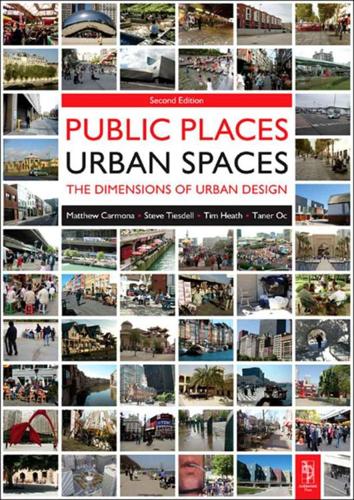
Public Places, Urban Spaces: The Dimensions of Urban Design
by
Matthew Carmona
,
Tim Heath
,
Steve Tiesdell
and
Taner Oc
Published 15 Feb 2010
(www.cts.cv.ic.ac.uk/staff/wp5-noladn.pdf) Paper to January 20001 Annual Meeting of the Transportation Research Board Norberg-Schulz, C (1980) Genius Loci: Towards a Phenomenological Approach to Architecture, Rizzoli, New York Norberg-Schulz, C (1969) Meaning in architecture, In Jencks, (Editor) Meaning in Architecture, The Cresset Press, London Norberg-Schulz, C (1965) Intentions in Architecture, MIT Press, Cambridge, Mass O Oc, T & Tiesdell, S (2000) Urban design approaches to safer city centres: The fortress, the panoptic, the regulatory and the animated’, in Gold, J R & Revill, G (2000) (Editor) Landscapes of Defence, Prentice Hall, Harlow, 188–208 Oc, T & Tiesdell, S (1999) The fortress, the panoptic, the regulatory and the animated: Planning and urban design approaches to safer city centres, Landscape Research, 24(3), 265–286 Oc, T & Tiesdell, S (1997) Safer City Centres: Reviving the Public Realm, Paul Chapman Publishing, London Office of the Deputy Prime Minister (ODPM) (2005) Planning Policy Statement (PPS) 1: Delivering Sustainable Development, The Stationery Office, London ODPM (2002) Better Streets, Better Places: Delivering Sustainable Residential Environments, ODPM, London Oldenburg, R (1999) The Great Good Place: Cafes, coffee Shops, Bookstores, Bars, Hair Salons and the Other Hangouts at the Heart of a Community (third edition) Marlowe & Company, New York Osbourne & Gaebler (1992) Reinventing Government: How the Entrepreneurial Spirit is Transforming the Public Sector, Plume Publishing, New York Osborne F 1918; (second edition 1942) New Towns After the War, J M Dent Publishers, London Oswalt, P (2006) (editor) Atlas of the Shrinking City, Hatje Cantz, Netherlands Oswalt, P; Misselwitz, P; & Overmeyer, K (Urban Catalyst) (2007) Patterns of the unplanned, in Franck K & Stevens Q (2007) (editors) Loose Space: Possibility and Diversity in Urban Life, Routledge, London, 271–288 Owens, S (1992) Energy, environmental sustainability and land-use planning, in Breheny, M (1992) (editor) Sustainable Urban Development and Urban Form, Pion, London P Panerai, P; Castex, J; Depaule, J C; & Samuels, I (2004) Urban Forms: The Death and Life of the Urban Block, Architectural Press, Oxford Papadakis, A (1993) (Editor) Terry Farrell: Urban Design, Academy Editions, London Papadakis, A & Watson, H (1990) (Editors) New Classicism, Academy Editions, London Papadakis, A & Toy, M (1990) Deconstruction: A Pocket Guide, Academy Editions, London Parfect, M & Power, G (1997) Planning for Urban Quality, Urban Design in Towns and Cities, Routledge, London Parolek, D; Parolek, K & Crawford, P (2008) Form-Based Codes: A Guide for Planners, Urban Designers, Municipalities and Developers, Wiley, New Jersey Peck, J (2001) Neoliberalising states: Thin policies/hard outcomes, Progress in Human Geography, 25(3), 445–455 Pendlebury, J (1999) The conservation of historic areas in the UK: A case study of ‘Grainger Town’, Newcastle upon Tyne Cities, 16(6), 423–433 Pendlebury, J. (2000) Conservation and regeneration: Complementary or conflicting processes?
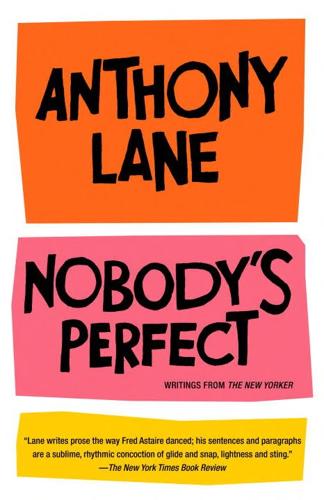
Nobody's Perfect: Writings From the New Yorker
by
Anthony Lane
Published 26 Aug 2002
Here is a man who had spent many chapters of his life in England, who would become a naturalized Englishman in his final year, and one of whose guiding principles was that anything, or anybody, covered in moss was by definition deserving of reverence. Yet here he was, still in the entrance hall of a new century, having the wit to wonder if his homeland would, after all, turn out to be what he would call the Great Good Place; if the same adventure in consciousness that drew Isabel Archer over the sea would lead others to make the return trip, unable to resist the temptations, the edifying screwups, of the moral hazard. His instincts, as ever, were correct, and people have spent the last ninety years or so in James’s trembling wake; even if you remain on English soil and merely read your way into America, you are stepping westward.